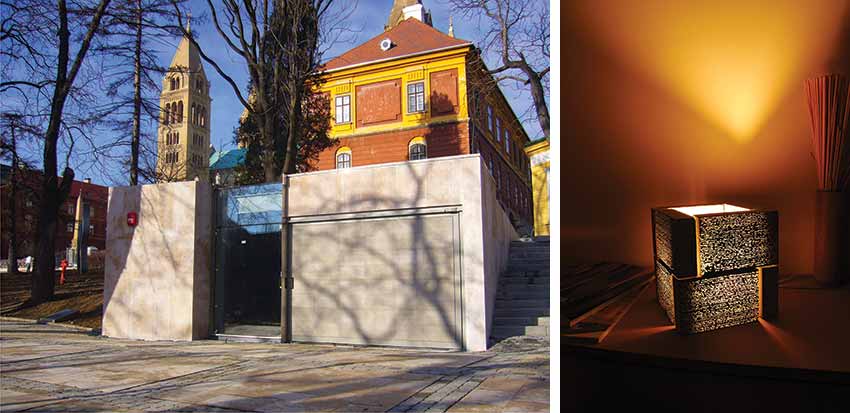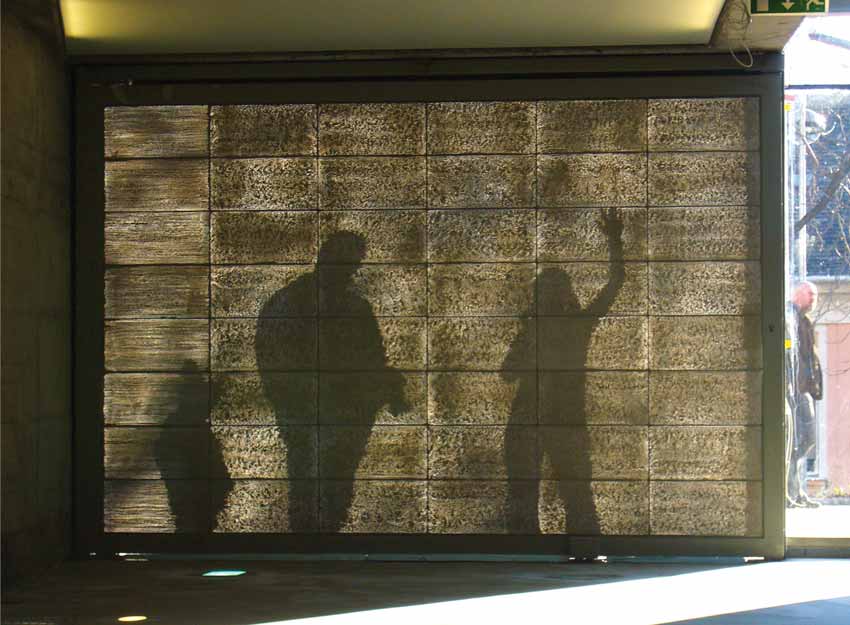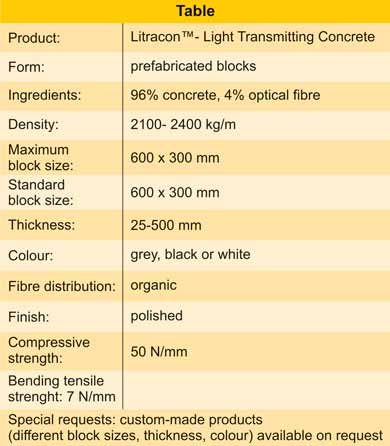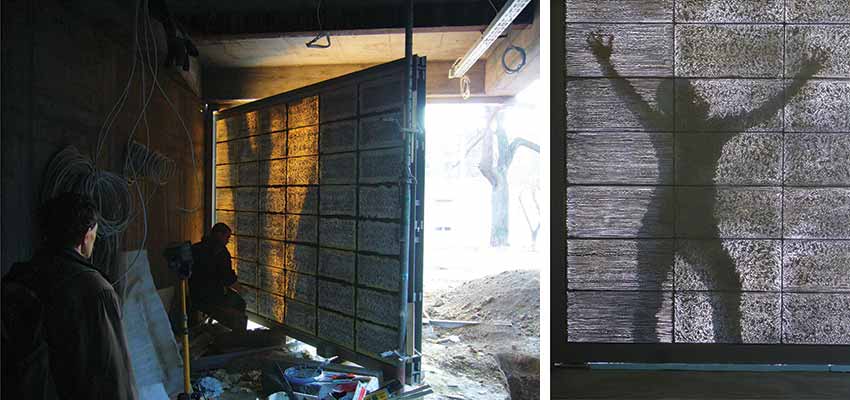
Transparency is the new buzz word that attracts the attention of others whether it's the case of humanities/social context that implies openness in communication/statement or in the case of objects like glass building that is also transparent and can be seen through. Seeing the increasing trend of transparency in every sphere especially in building material sector Hungarian Architect Aron Losonczi thinks, is it possible to make concrete structure transparent? When imaginations run wild they invent ways from their own. Architect Aron Losonczi also got a result for his quest and in 2001 he had invented concrete (Litracon™) that is transparent.

We all know that concrete can be concocted to look like many things, but who would have thought that the rock-solid substance could be a substitute for a window or as a partition wall.

The fibers lead light by points between the two sides of the blocks. Because of their parallel position, the light-information on the brighter side of such a wall appears unchanged on the darker side. The most interesting form of this phenomenon is probably the sharp display of shadows on the opposing side of the wall. Moreover, the color of the light also remains the same.
Thousands of optical fibers are organized into thin layers and run parallel to each other between the two main surfaces of each block. The proportion of the fibers is very small (4%) compared to the total volume of the blocks. Moreover, these fibers mingle in the concrete because of their small size, and they become a structural component as a kind of modest aggregate. Therefore, the surface of the blocks remains homogeneous concrete. In theory, a wall structure built from light-transmitting concrete can be several meters thick, because the fibers work without almost any loss in light up until 20 meters. Load-bearing structures can also be built of these blocks, since the fibers do not have a negative effect on the high compressive strength value of concrete. The blocks can be produced in various colors and sizes.

The technology of concrete (Litracon™) has received several awards like the 'Red Dot: Best of the Best 2005' Award, LEAF Award 2006, iF Material Award 2008 and was also nominated for DESIGNPREIS 2006™ award.
Recently Litracon introduced a new product Litracon Pxl, a novel and widely applicable, transparent building material. It was developed by architect Aron Losonczi. Contrary to Litracon, in Litracon Pxl there is no optical fiber for light transmission but a specially formed plastic unit. The panels can even be storey high that makes installation easier. This new building material can be applied in several fields of design and architecture e.g., illumination façade, window shade, inner partition walls or as a decoration element in interiors architecture.















